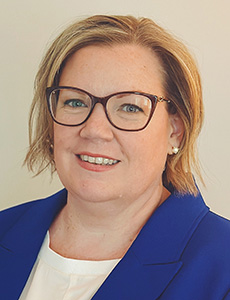As Property Insurance Costs Soar, Businesses Seek Out Alternative Risk Transfer Options

Buyers looking for relief from property insurance pricing increases aren’t likely to find it anytime soon.
Prices continue to rise as carriers are squeezed by inflation and supply chain disruption on one side and increasing storm frequency and severity on the other.
Globally, prices soared by 7% year-over-year for the third quarter of 2023, according to Marsh’s latest Global Insurance Market Index.
In the U.S. alone, prices surged 14% over the same period, representing the 24th consecutive quarterly rise.
These increases were primarily driven by a combination of reinsurance and capital costs, strong demand for coverage, limited new capacity from insurers and continued losses.
In terms of U.S. commercial property specifically, however, inflation had the biggest impact on pricing. Inflation pushed up the price of most goods, including construction materials and labor, resulting in a rise in property valuations and, consequently, claims costs. It also meant that purchased limits may not be enough to cover a loss.
“While the rising cost of materials may have leveled off a bit now, labor costs continue to be high due to scarcity of manpower, and that’s what is driving up the cost of claims inflation,” said Douglas Dick, assistant vice president, client success/technical lead at Crawford Global Technical Services.
“Part of that is dependent on location, and it’s being exacerbated by the impact of storm severity too,” Dick said.
Hence underwriters have had to remain diligent to ensure that property valuations are up to date on both new and renewal business. Insurers have also had to continue to increase overall pricing on a per-account basis to tackle higher loss costs, while applying sublimits such as occurrence limit of liability or location by location sublimits based on the inflation rate in a particular region. And despite sufficient underwriting capacity, they have largely remained conservative about how they deploy it.
“The easier you can make an underwriter’s job, the more responsive they are going to be when dealing with your account.”
— John Smith, CEO of Pennsylvania Lumbermens Mutual Insurance Company
“Rate increases have been noticeable in this segment since mid-2017 through the third quarter of 2023,” said Josie Novak, financial analyst at AM Best.
“These pricing increases are being used as an offset to the rising impact of catastrophes and the mounting cost of reinsurance.”
The problem has been compounded by supply chain delays, which have driven up lead times for products, particularly those with electrical components and raw materials such as lumber and steel.
Extreme Weather Losses
Extreme weather is also taking its toll, and U.S. weather- and climate-related disasters peaked at a record $25 billion in 2023. Catastrophe frequency and severity has been on the rise due to more humid air and increasing temperatures, which have created extreme weather conditions such as hurricanes and heat waves.
Secondary perils such as severe convective storms, flooding, storm surges, tsunamis and wildfires, exacerbated by climate-related risk, are also more prevalent. Inflationary pressures merely compound this loss severity.
In response, underwriters insuring coastal or catastrophe-prone exposures are carrying out much greater due diligence to ensure that the correct total insurable value is being used for pricing and replacement cost estimates.
Additionally, insurers increased named storm deductibles, while limits are becoming more restrictive. They are also improving secondary peril modeling to better price the risks.
“Severe weather events are more common and no longer limited to hurricanes and earthquakes from a commercial property market perspective,” said Rick Miller, U.S. property leader for Aon’s Commercial Risk Solutions.
“Winter storms and severe convective storms have significantly impacted the property market over the past five years.
“Approximately 75% of global catastrophe losses in 2023 were the result of severe convective storms. More development in most areas is leading to bigger losses from storms that are more frequent and severe,” Miller added.
A knock-on effect of these weather events is greater volatility in the reinsurance market, prompting several reinsurers to scale back their exposures and risk appetites as they move away from lower layers and aggregate covers. This has been compounded by rising interest rates, poor investment results and the war in Ukraine, resulting in higher reinsurance pricing.
Alternate Risk Transfer
In just one example, as the surge in captive formations makes clear, alternate risk transfer is being looked at more and more by those seeking relief from seemingly unrelenting premium price increases.
“Many options exist to help support the traditional risk transfer at and in today’s current market environment. Risk managers are looking towards alternative risk transfer solutions as a way to provide more certainty as well as ‘stable’ capacity,” said Michael LaRocca, head of property and specialty North America at Swiss Re Corporate Solutions.
“We’ve seen an uptick in interest in our parametric solutions, captive retentions, aggregate stop-losses and structured fronting solutions. We expect this to continue into 2024 and beyond.”
To secure the best possible coverage at an accurate and affordable price, insureds need to decide what risk they are willing to take on in the form of deductibles or self-retention and alternative risk transfer vehicles such as captive insurance.
A leading property broker said he too is fielding questions about and increasingly advising clients on alternative risk transfer solutions.
“We are constantly talking to our clients about the balance between retaining and transferring risk and understanding how to utilize their balance sheet to mitigate some of the current headwinds within the marketplace and retain more of their own risk,” said Mike Rouse, Marsh’s U.S. property practice leader.
“Clients of all occupancies should be open-minded about disrupting their programs. Increased retention, structured deals, parametrics, stock throughput and self-insurance all challenge the market and create competition to help manage cost,” added Mike Andler, executive vice president and property leader at Lockton.
For their part, insurers need to work with brokers to ensure that insureds increase their policy limits adequately to reflect the insured property replacement costs and take into account the effect of inflation, and to keep them abreast of the latest marketplace developments. By using data gathered by their risk engineers, they can better price the risk and help with loss control. &










